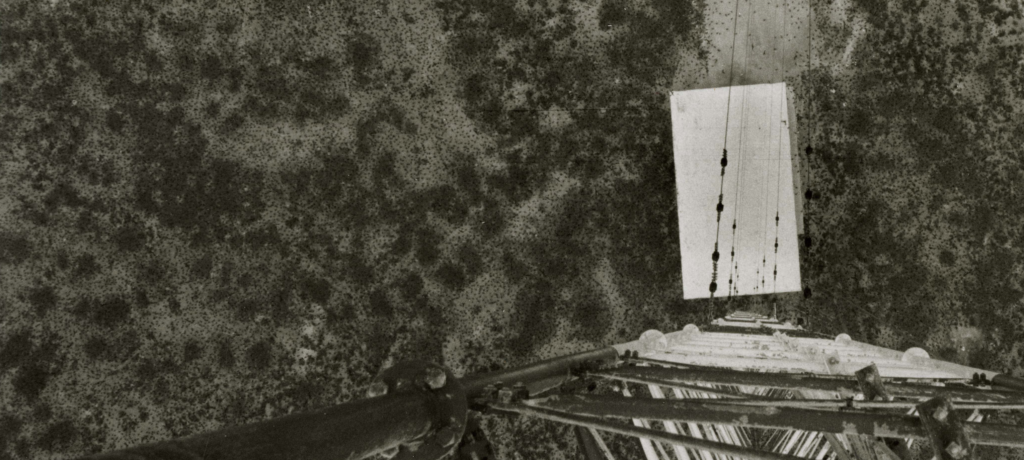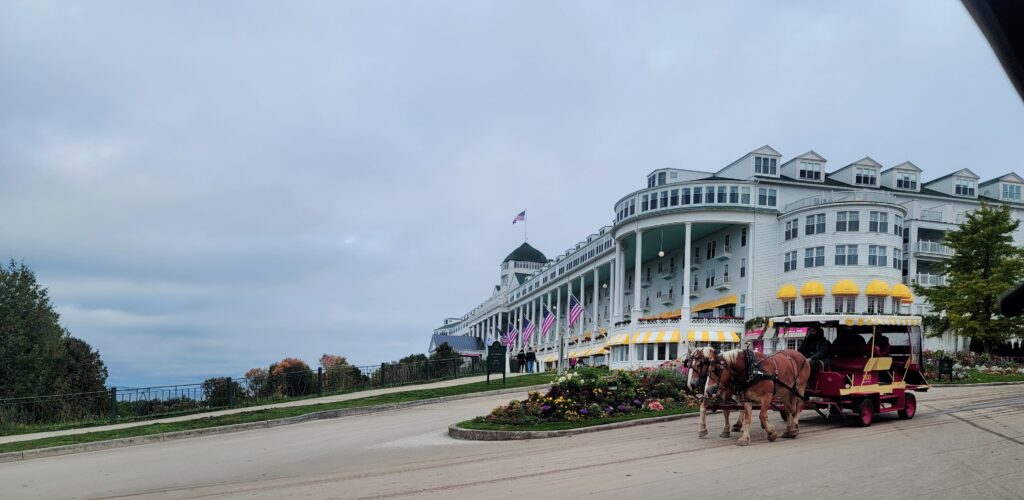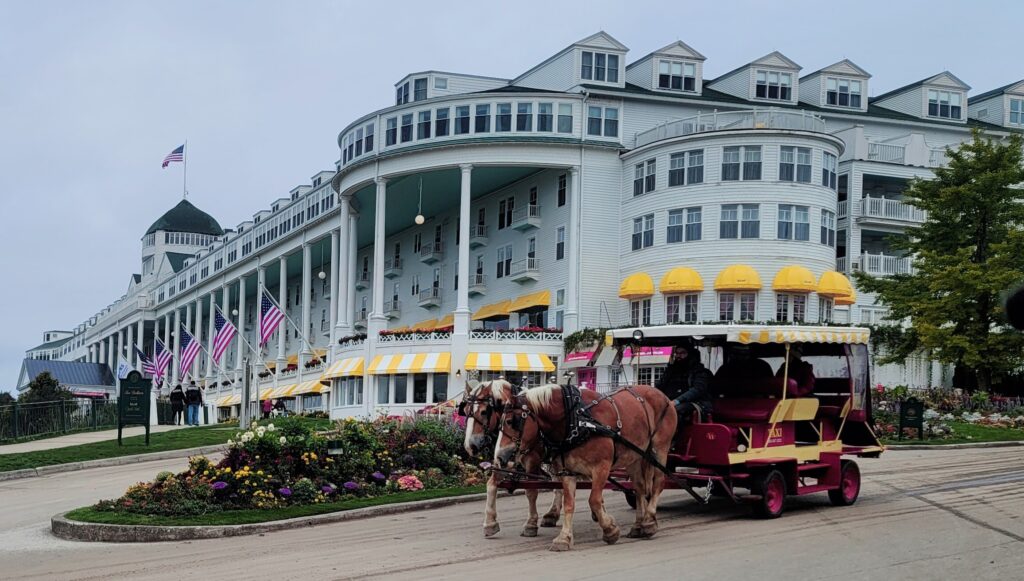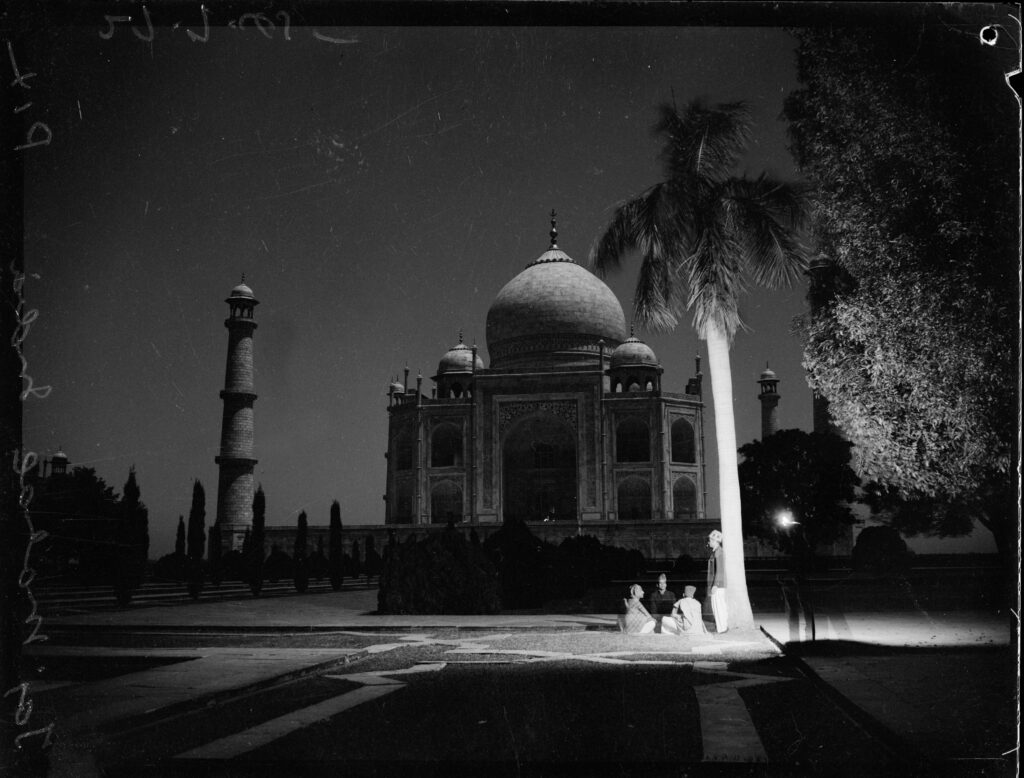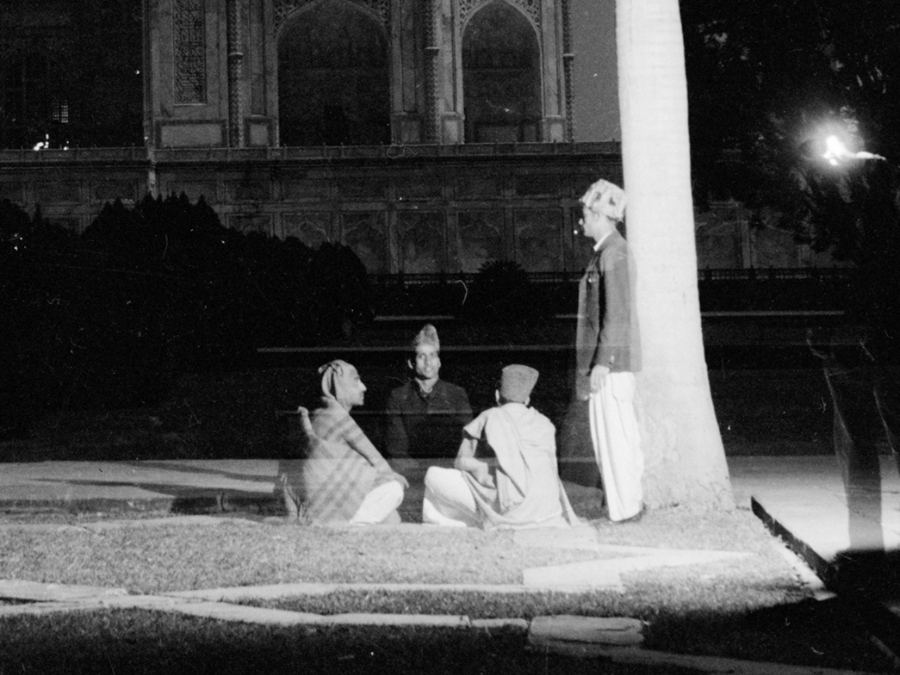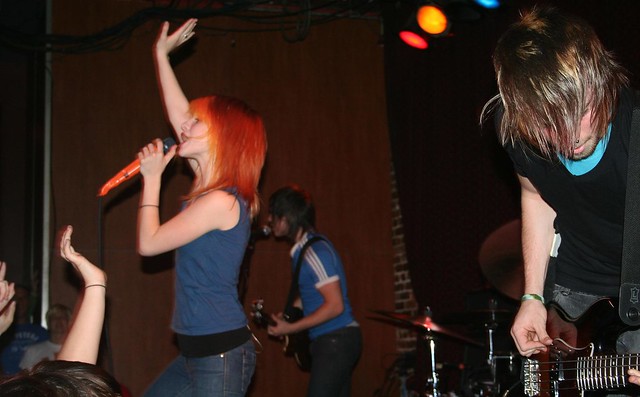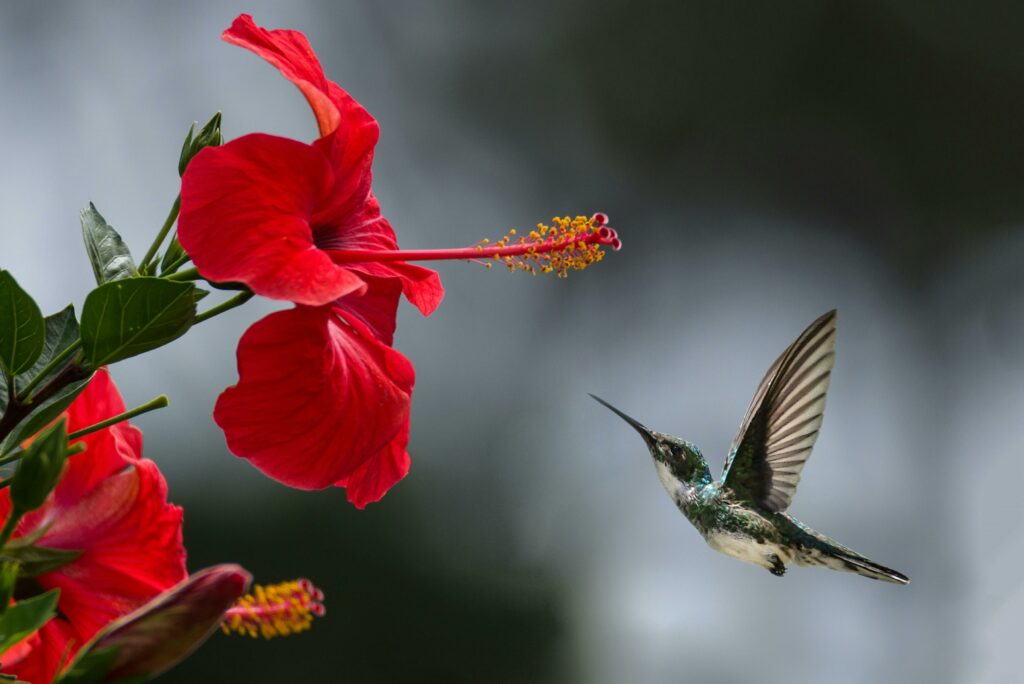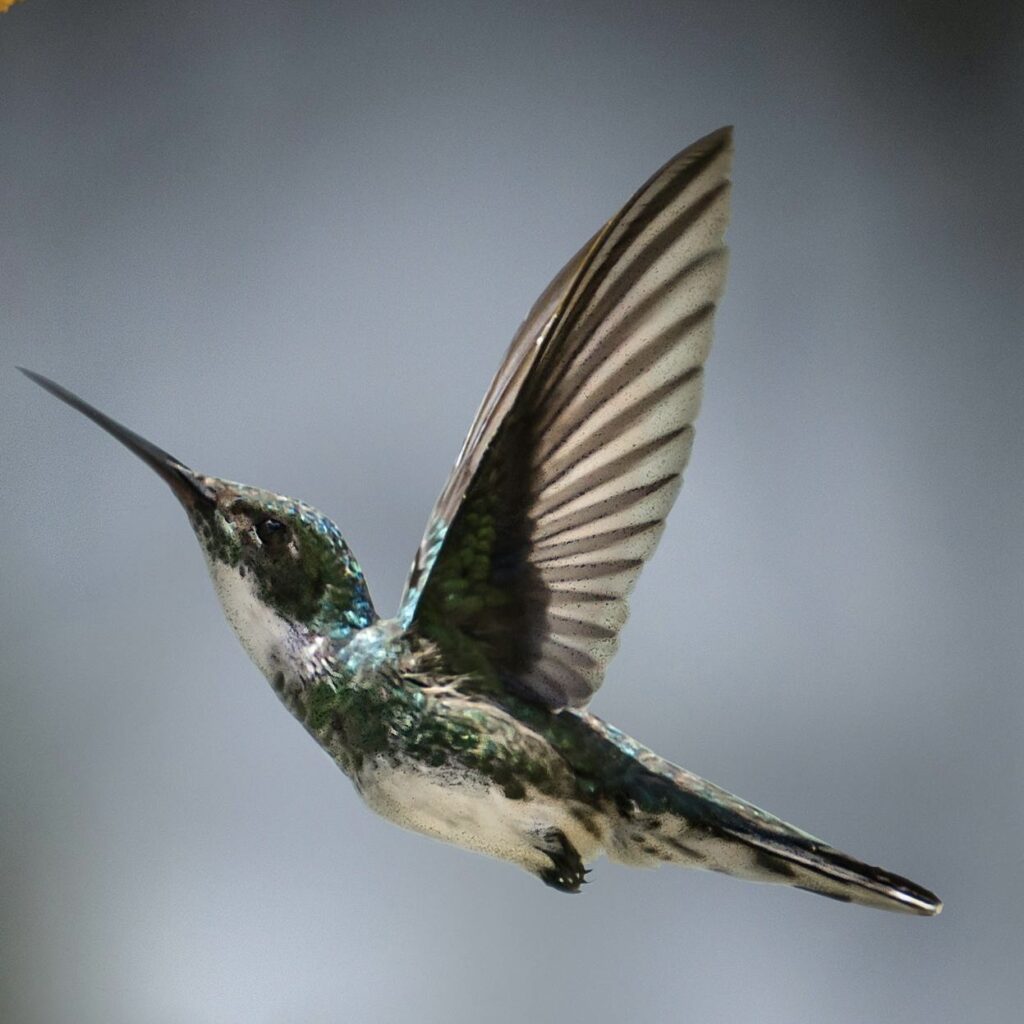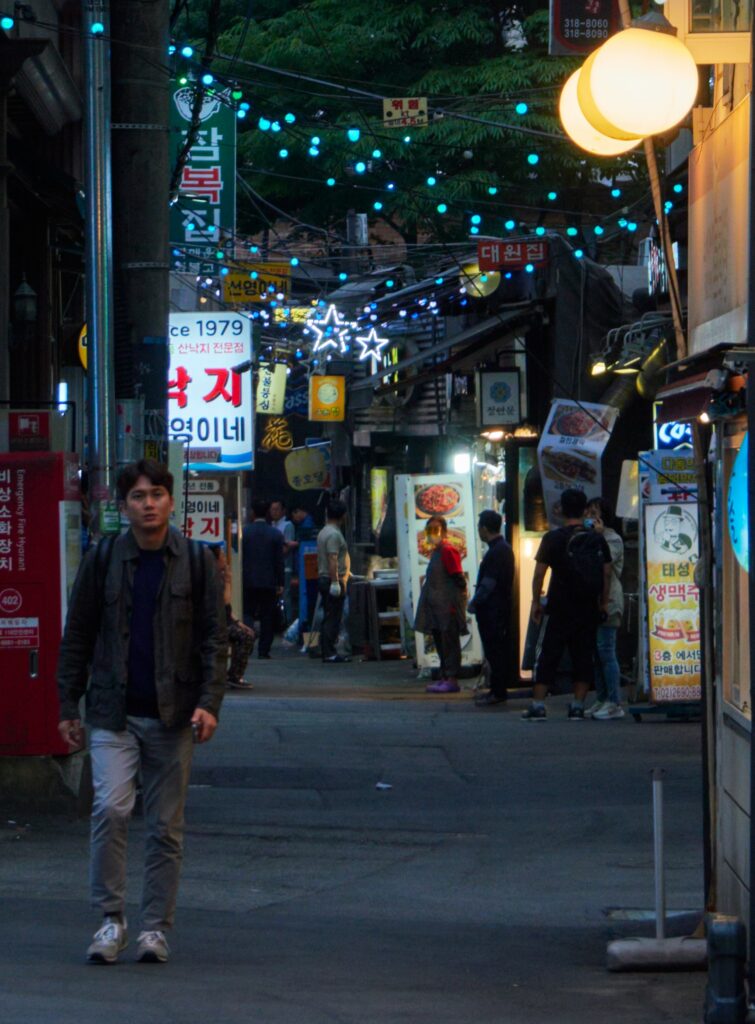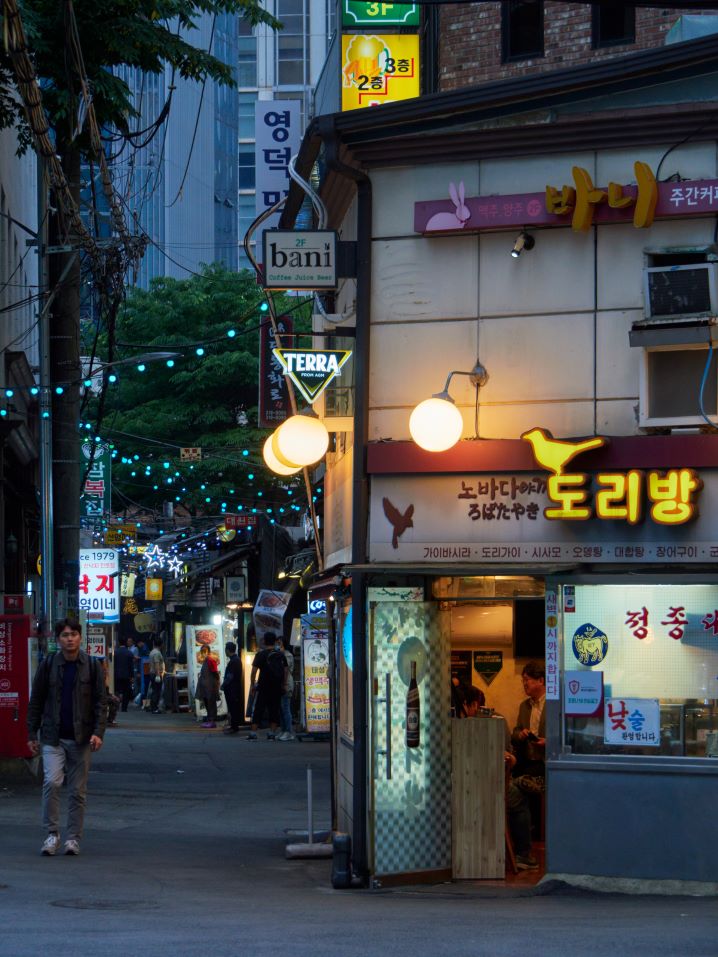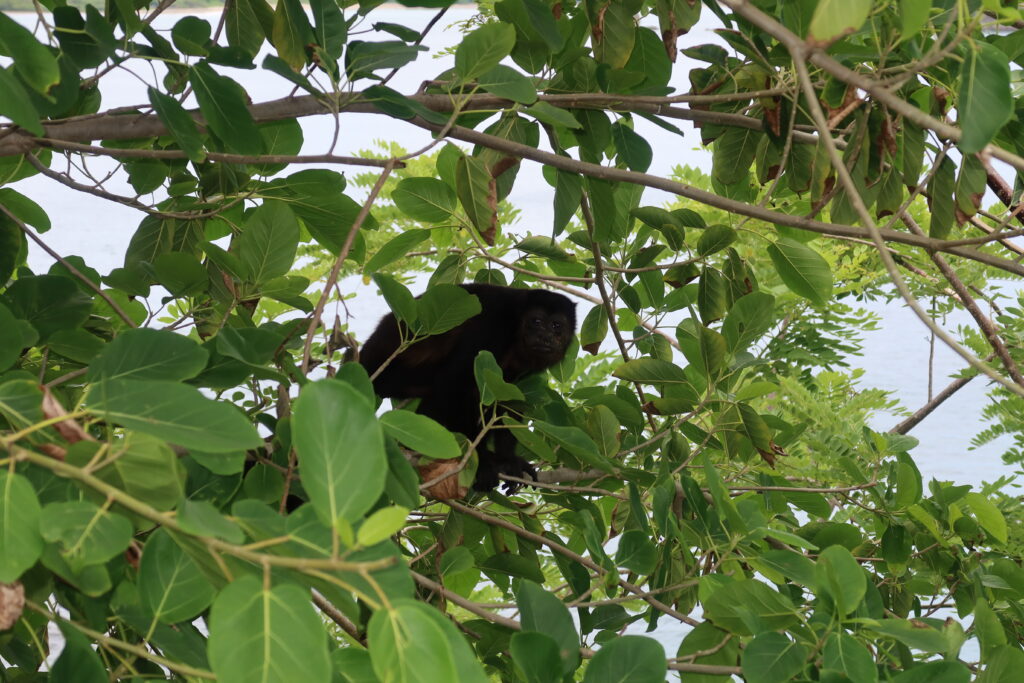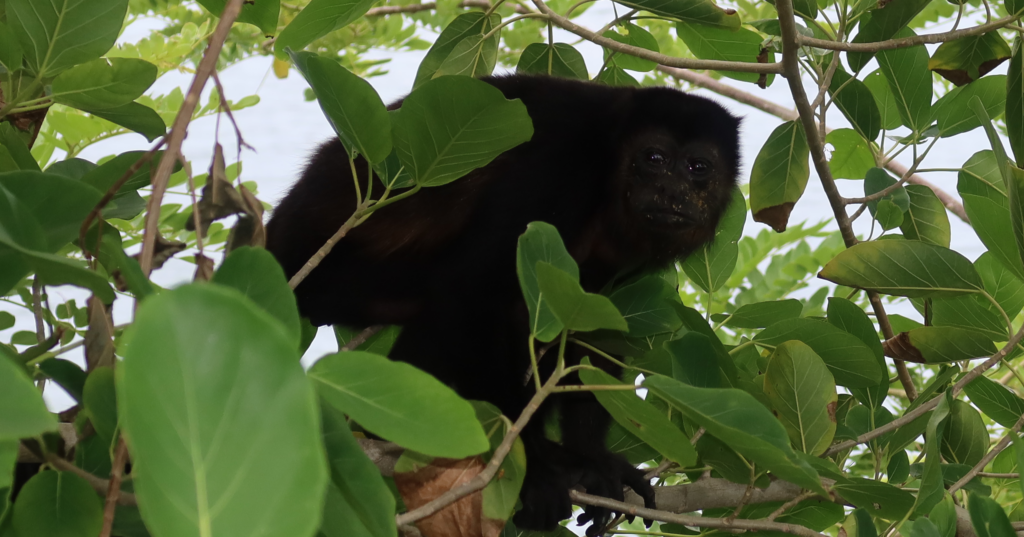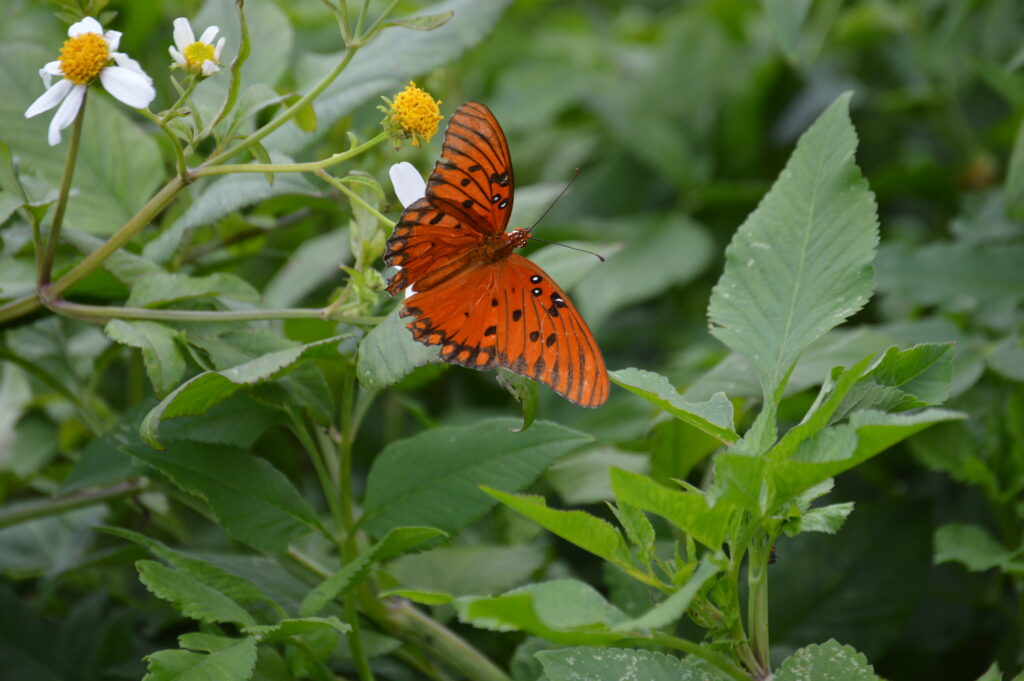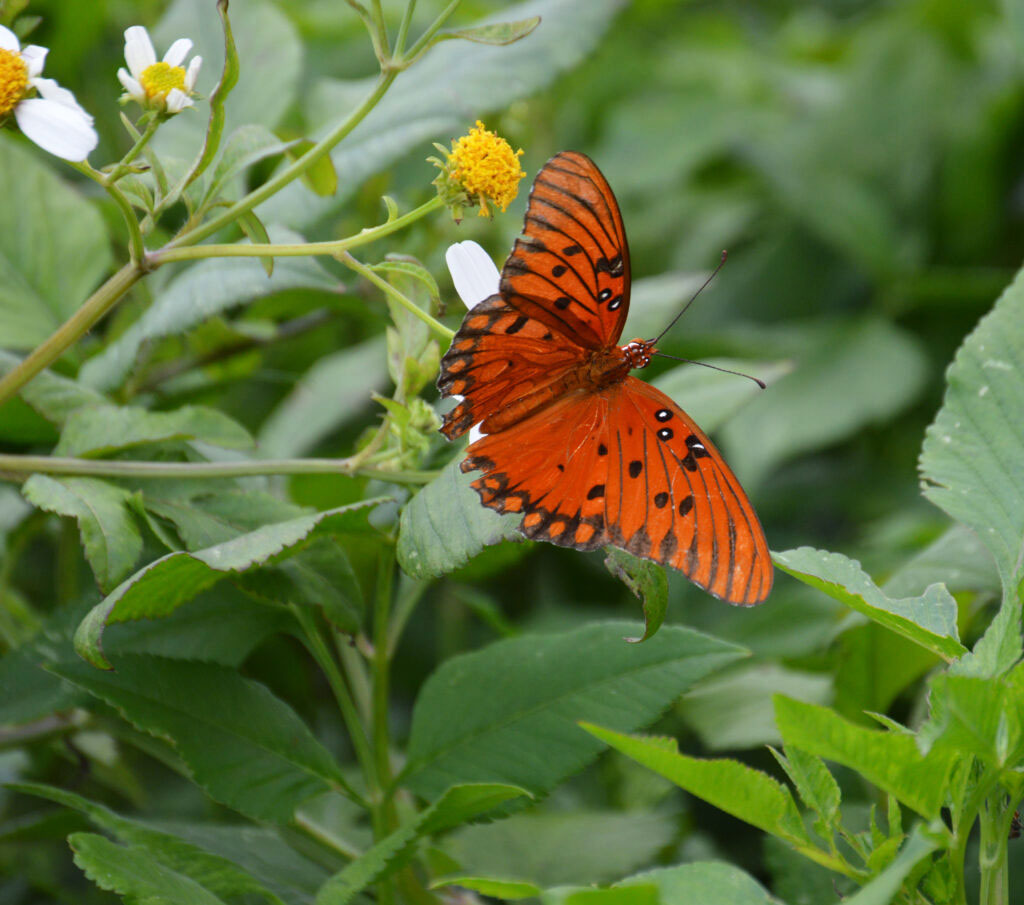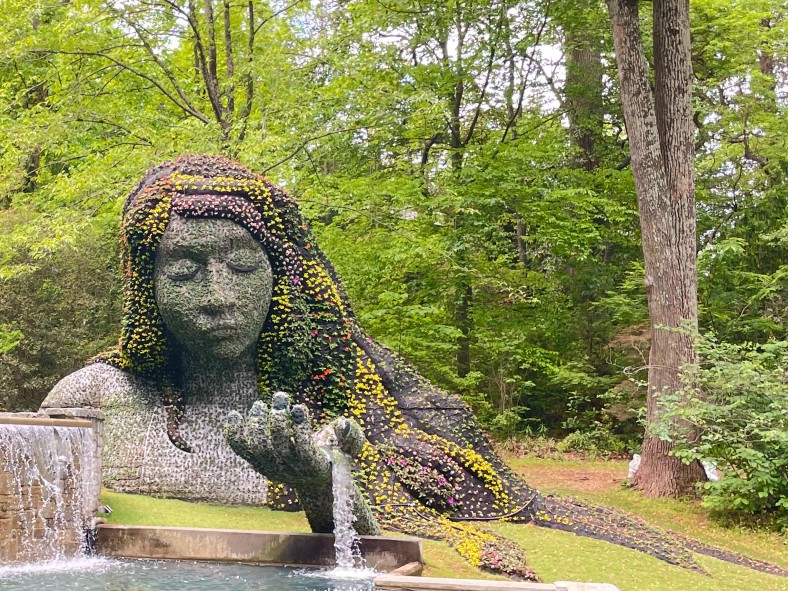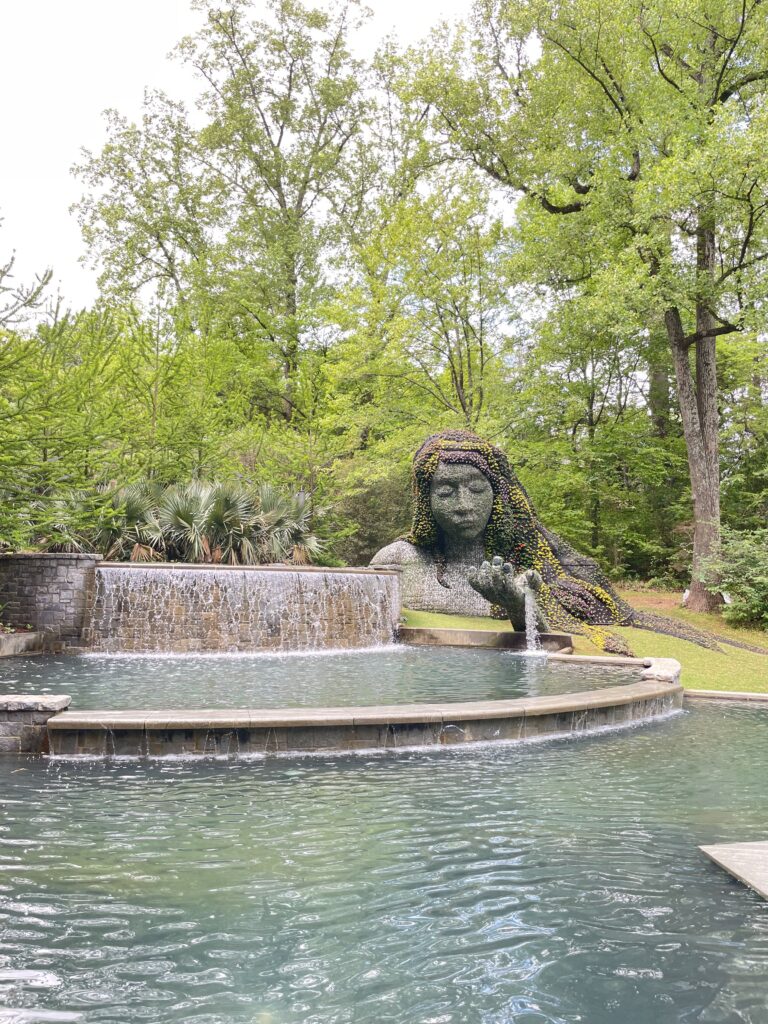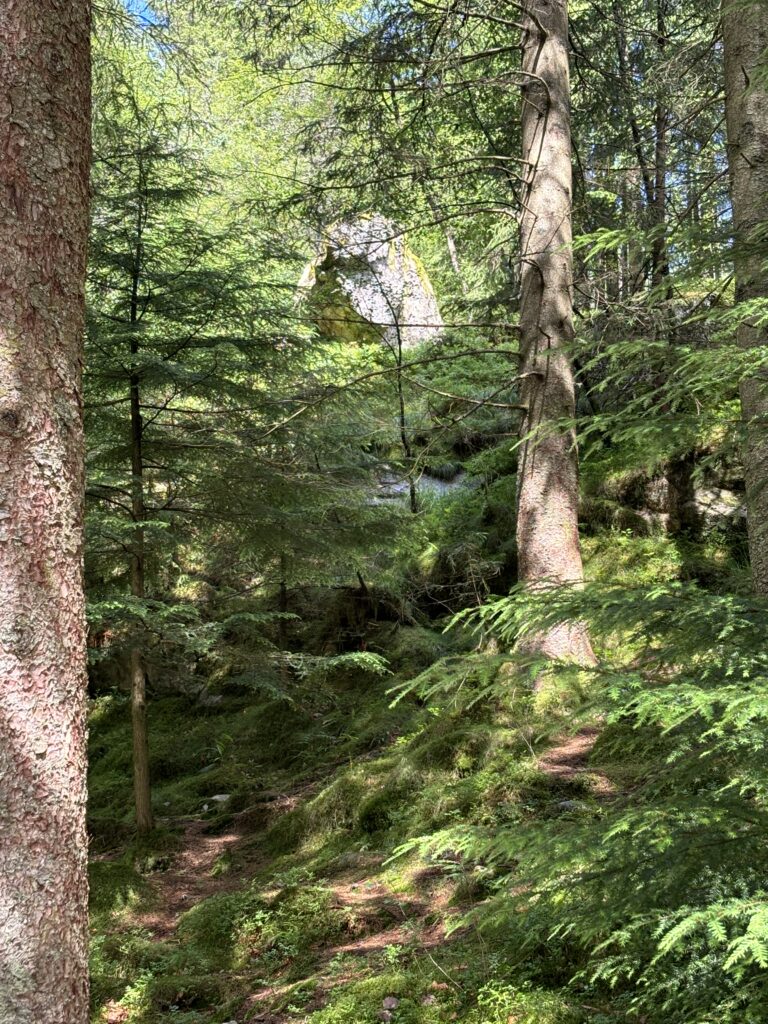
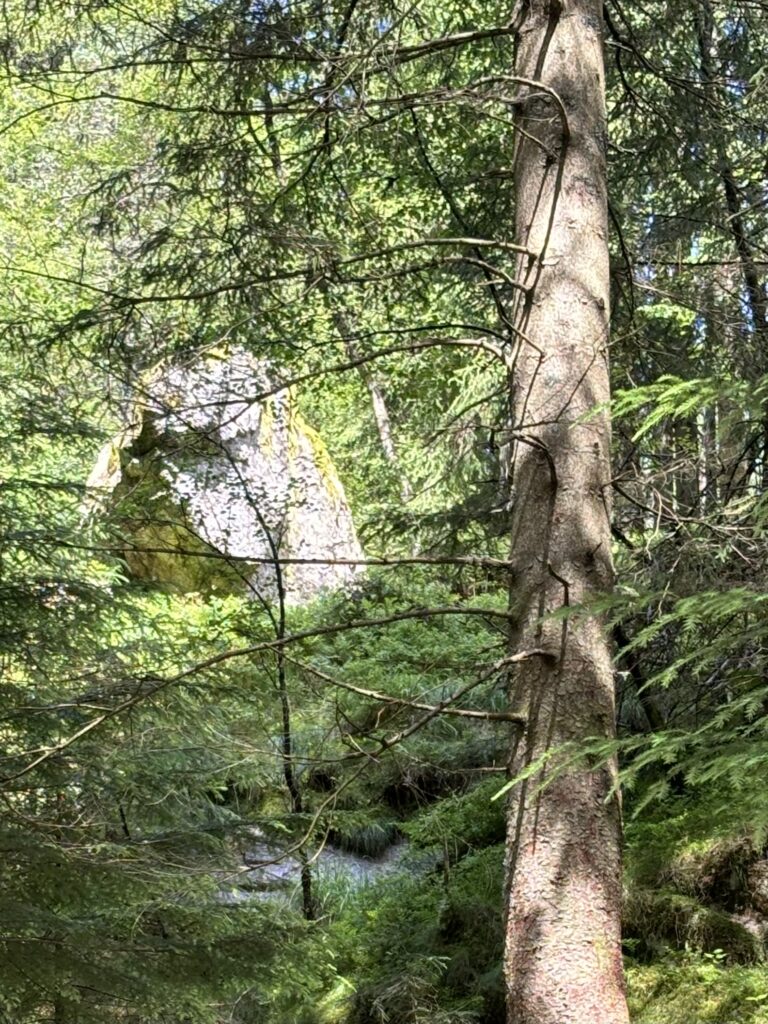
This is a photo I took on my trip to Norway in June of 2024. Norway is steeped in folklore and stories of mountain Trolls is prevalent. When my companions and I climbed Mount Floyen in Bergen, Norway, the park and its signs, leaned heavily into these stories, warning climbers to beware of the trolls as they hiked. Most of the hike was beautiful and uneventful- besides the trials of climbing a mountain obviously. But as my companions and I finally descended the mountain we caught a glimpse of this big form staring down at us from the cliffside above. The original captures the immense climb that separated us and kind of down plays the face my friends and I thought we saw- it could be mistaken as just a big boulder. In the crop I focused on zooming in on the face so that it can be seen, but still capturing that it is staring down at us by focusing in on the giant tree in the foreground.
So where the original could be mistaken as just a rock- kind of like the blurry Loch Ness Monster Photo, the cropped version seems to showcase a curious, otherworldly creature hiding among the trees.


